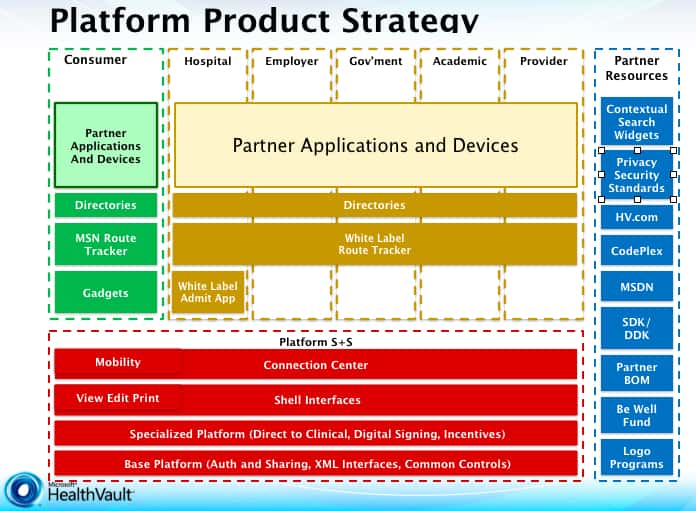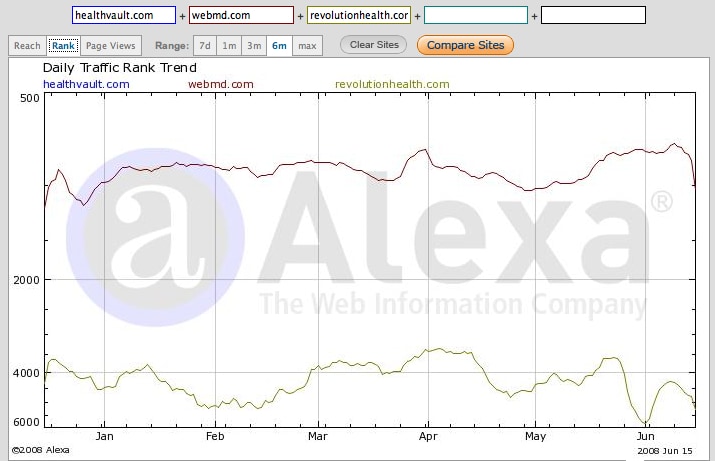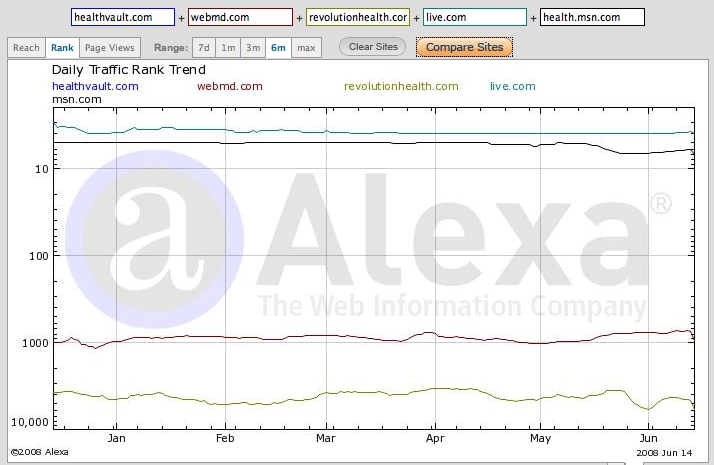Yesterday, I pointed the reader to the Microsoft site that had the slides posted from last week’s HealthVault Developer’s Conference. This afternoon I reviewed the slide decks, all of them, and here is what I learned.
From the Technical Track:
Quite a bit of information provided, most of it designed to update the audience on progress the HealthVault team has made since the initial launch last October. There is a lot of repetition in the various technical decks, so if you are going to choose one to download, go with the HealthVault Architecture Overview as it really has all you need to know, with one minor exception.
As for key messages in the technical track, they are as follows:
- Greatly simplifying the sign-in/sign-up process for the consumer (I tested it and it really is a substantial improvement). Also making more general improvements to the UI (user interface).
- Build-out of data types with 20 new ones since launch and 12 more pending. This is quite important for developers of personal health applications (PHAs) that will sit a on top of HealthVault. Still, looking at those data types that they have today, it is hard for me to understand the logic of the choices made. Comes across as somewhat of a free-for-all. Most likely driven by existing partner needs.
- Ability to directly connect to clinical data. This is through their work with such partners as AllScripts, KRIPTIQ, and Eclipsys. Still no Cerner, GE, McKesson and most importantly, Epic, who did not even send a representative. Remember, its Epic’s My Chart that powers the Kaiser patient portal My Health Manager that Kaiser and Microsoft will be working on together to link My Health Manager to HealthVault.
- Restatement of basic design principles: Inclusive of standards, Commitment to “Openness” (they have signed on to the Open Specification Promise (OSP)) and CodePlex support (supporting both Java and Ruby).
The most interesting slide in all the technical session slides was the following one (it is not in the Architecture Overview slide deck, but one titled: Platform Adoption) that lays out their overall platform strategy. This gives an extremely clear picture of their thinking and where they are headed.
For example, Consumers are put one target market of six shown, though one may argue that the “Employer” column may share much in common with the Consumer. And what is quite puzzling is: Where are the payers? It oul seem to this analyst that if you are targeting employers, the leap to supporting payers is not that big as employers and payers have very similar needs, particularly when it comes to managing population health and encouraging healthy behaviors.
From the Business Track:
While I found the technical slides to have some real nuggets of information, was quite surprised at the dearth of information found in the business session slides. Most of the information was very simplistic. With all the marketing muscle at Microsoft, I expected something better.
But in and amongst the weeds, I did come across some very interesting information in the presentation entitled: “How We Make Money”.
This slide deck begins with a shot of the MSN.com Health & Fitness site, with a HealthVault widget from the American Heart Association embedded on the site demonstrating personalization, how they intend to leverage existing Microsoft properties and sell Web property “real estate” to partners. This theme was extended to the HealthVault search engine. In this case it looks like Microsoft intends to re-brand HealthVault Search as a subset of the Microsoft existing search engine, live.com
It appears that Microsoft intends to have HealthVault be subsumed into these existing properties, which see far more traffic then HealthVault does today. I did a quick Alexa analysis comparing first three health-centric websites, HealthVault, RevolutionHealth and WebMD. HealthVault doesn’t even show-up in the rankings.
Did another Alexa analysis, this time adding live.com and msn.com (couldn’t get a read on the sub-site health.msn.com) and as one would expect, these two properties see lots of eyeballs, which could give far greater exposure to the HealthVault property/brand.
Remains to be seen if that will ultimately be the case, but HealthVault clearly is not getting much traffic today, so it certainly can’t hurt. But then again it may have the affect of diluting the HealthVault brand.
But this is where all those partners come in (there are 36 software partners and 9 device partners up and running today). In a somewhat brazen and even arrogant manner, the HealthVault folks are adopting a marketing strategy that they refer to as an “ingredient branding strategy” Think Dolby, Intel Inside, etc. What they are looking to do with the ingredient strategy is have all their partners put the HealthVault label (web tile for websites, logo on device packaging) and let the partners push the HeathVault brand.
This is ludicrous.
In a market as small, immature and nascent as this one, with so many challenges ahead, it is hard to believe that Microsoft is depending so strongly on its partners to take the HealthVault brand to market. Really quite bizarre and something they should rethink.
Tomorrow, will have see the last post on this event and will have highlights from interviews wth several who attended this event.







0 Comments